In the early 2000’s, the Indian motorcycle segment was predominantly ruled by purpose-built commuters. Commuter motorcycles gave good business and manufacturers were happy with the numbers. An enthusiast’s fleeting fantasy of speed was materialised only by a few manufacturers and TVS was one of them. Remember the Fiero? It was developed in conjunction with Suzuki and offered blistering performance in a featherweight package.
Then, Bajaj came up with the Pulsar which went on to become one of the best-selling sporty commuters in India. TVS had to do something about the Pulsar’s monopoly in the segment and years later, they came up with the Apache. The competition between Pulsar and Apache became fierce and how! I remember seeing numerous Apaches and Pulsars in my city when I was a kid and frankly, I liked the Apache’s design more than the Pulsar’s wolf-eyed one. Later, the Apache got a healthy dose of upgrades in the form of the RTR (Racing Throttle Response) series which were loaded with features trickled down from TVS racing department. Fast forwarding today, the budget performance motorcycle segment has witnessed multiple new entrants and TVS has armed the Apache (pun intended) to the teeth with racing-inspired parts and technology and has made it ready to face its rivals. But is it really worth putting your money down on this sporty bike? Read on to find out:
[ATTACH=CONFIG]n21408[/ATTACH]
[B]Design and Features:[/B]
The basic silhouette of the bike displays undertones of sportiness, especially at the tank and the tail section. The front end is sleek, followed by a sculpted, muscular fuel tank. The tank shrouds and the engine cowl enhance the mass-forward design. The rear is sharp and has a raised tail section with faux vents on either side between the rider and the pillion seat. As expected from a sporty bike, the seat is a split unit and so is the grab rail.
[ATTACH=CONFIG]n21386[/ATTACH]
The traditional front forks get the golden colour treatment to highlight the bike’s racing credentials. The headlamp is petite, angular, and offers ample amount of illumination on both low and high beams. The display counter crowning the headlamp is fully digital and has a nice black-on-white background layout. It displays speed, revs, odo readings, two trip distances, fuel level and time. Additionally, there is also a top speed recorder and a lap timer. Another interesting feature is that whenever you do a high-speed run, it records the top speed achieved at that time and displays as soon as you come to a stand still. Oh, and it also has a neat little red LED shift indicator integrated with the console which lights up at 7,000 rpm. I wish the tachometer readings were a little bigger so that it is easier to read at high speeds.
[ATTACH=CONFIG]n21387[/ATTACH]
[ATTACH=CONFIG]n21388[/ATTACH]
The switchgear also has a solid build quality and is nicely designed. The layout is similar to what’s typically found in commuter bikes. The only grouse I found was the awkward positioning of the horn. It’s a little difficult to use the horn as you’re slowing down (Indian traffic is full of such situation) because your fingers are occupied with the heavy clutch and there’s barely any room for the movement of the thumb. And yes, the clutch is too heavy for a 200cc bike.
[ATTACH=CONFIG]n21389[/ATTACH]
[ATTACH=CONFIG]n21390[/ATTACH]
The chiselled fuel tank looks big but can only hold 12 litres of fuel. It comes with an offset fuel cap, which is quite tasteful, in my opinion. People with OCD might have a problem with it, though. The plastic strip that runs along the middle portion of the tank gives the effect of a premium 3D racing-stripe. The tank shrouds on the either sides not only add to the visual bulk, but also offer a functional feature. It acts as a ram-air cooling system for the engine because of which the heat is reduced by almost 10 degree Celsius.
[ATTACH=CONFIG]n21391[/ATTACH]
[ATTACH=CONFIG]n21395[/ATTACH]
[ATTACH=CONFIG]n21392[/ATTACH]
The foam split seats offer decent comfort despite the padding being minimal. The seating position is more or less upright but is versatile enough for both aggressive riding and relaxed commuting. The rider’s seat has plenty of room to move about and the pillion seat is also comfortable enough, albeit a bit high.
[ATTACH=CONFIG]n21393[/ATTACH]
[ATTACH=CONFIG]n21394[/ATTACH]
The rear ends with a small LED tail light and a bulky tyre-hugger. Looks like, designing a good looking, functional tyre hugger that complies with the law is really difficult! The footpegs are made of aluminium and are rear-set for a sporty stance. Coming to the exhaust, I found the design to be quite interesting. It looks like a weapon straight out of a science fiction film. The twin outlets let out a refined, docile drone when ridden with a light wrist, and a gruff grunt when revved hard. Its hexagonal cross section complements the sharp tail nicely. Another advantage is that since the shape isn’t bulky, the exhaust is less likely to get scratched when parking in a narrow lot or navigating through a congested road. Both the front and rear wheels are 17-inchers where the front is wrapped with Pirelli Sport Demon and the rear- Angel GT. The black alloys with white pinstripe accentuate the sporty credentials of this bike.
[ATTACH=CONFIG]n21396[/ATTACH]
[ATTACH=CONFIG]n21398[/ATTACH]
[ATTACH=CONFIG]n21397[/ATTACH]
[ATTACH=CONFIG]n21399[/ATTACH]
Overall, the fit and finish is top notch and the little attention to detail like the ‘TVS Racing’ logo on the pinstripes, RTR logo on the tank let the bike exude a nice, performance-oriented look.
[B]Performance and Fuel Efficiency:[/B]
The Apache RTR 200 4V uses a four-stroke 197.7 cc oil-cooled engine which pushes out 20 PS of power at 8,500 rpm and 18.1 Nm of torque at 7,000 rpm. The engine is paired with a five-speed transmission unit that puts the power down to the rear wheels via a chain drive. The power band is mostly concentrated between 3,000 and 7,000 rpm. Stay within this zone and feel the bike zoom with aplomb. The counter-balancer works well in keeping the engine vibe-free at normal speeds. The first three gears have a short ratio and are perfect for acceleration. The gear shifts are quick, butter-smooth, effortless and precise. It is a delight to quickly go through the gears and accelerate hard as the light weight of the bike (148 kg kerb) efficiently exploits physics.
[ATTACH=CONFIG]n21400[/ATTACH]
The fourth and fifth gears are tall and I found the fifth gear to be quite versatile. It can pull right from 35 kph, all the way to triple digit speeds. I did sorely miss the presence of an additional gear because the engine loses its steam post 110 kmph. Make no mistake, the bike can cruise happily at 100-105 kph. But beyond that, vibrations start creeping in- especially at the footpegs and handlebar. I feel the chassis is responsible for this because the bike uses a split-cradle frame with the engine as a stressed member. Therefore, there is no downtube as such for the engine to ‘rest’ upon. Rubber mountings could have helped keep vibrations at bay.
[ATTACH=CONFIG]n21401[/ATTACH]
There was one nagging issue in the beginning, though. At traffic lights, I found it really difficult to slot into the neutral gear from the first or from the second gear. One workaround I found was to let the bike move in gear for a few inches and then try slotting into the neutral. It worked for me. Oddly, after a few days of riding the bike, the issue ceased to exist.
Now, coming to the most important question- ‘Kitna deti hai?’ Perhaps, this seems to be more important than the price of the bike itself! But we’ll come to that later. The bike gave me 31 kpl, under a mix of city and highway riding conditions. It is really commendable considering the fact that this was achieved with an aggressive throttle and highway speeds were 100+ kph for most of the time. I’m sure the bike will return more than 45 kilometres to a litre if ridden within limits, like a commuter.
[B]Ride and Handling:[/B]
The Apache RTR 200 4V employs traditional forks up front and a KYB monoshock at the rear. Speed is shed by a 270mm petal disc at the front and a 240mm petal disc at the rear. This is the first bike from TVS to be equipped with a monoshock. I think they have one of the best suspension set-ups in the segment and is perfectly tailored for Indian roads. The damping is just about enough to soak up most of the bumps with grace and give you a pliant ride. And the rebound doesn’t give you any nasty surprises either. Hats off, no, Helmets off to TVS for achieving such a sweet set-up. I didn’t find any sign of nervousness from the bike even at highway speeds. The bike felt planted and the chassis is rigid enough to give you a solid feel, yet flexible enough to give you a proper feedback while cornering.
[ATTACH=CONFIG]n21402[/ATTACH]
[ATTACH=CONFIG]n21403[/ATTACH]
[ATTACH=CONFIG]n21404[/ATTACH]
The brake-bite is frankly ferocious and offers swift retardation irrespective of the speed you do. The feedback is brilliant although I wish it’s a little more progressive. It feels almost like a crime that TVS still hasn’t come up with an ABS variant for a bike with such potent brakes, considering they have ABS on offer on the cheaper, Apache RTR 180. The clip-ons and the grippy tyres also do wonders for the bike’s handling. About the tyres- the front wheel is equipped with a Pirelli Sport Demon and the rear is wrapped with the Angel GT. Both are designed for sport touring but the combination provides good traction and the side-walls are also ample enough for some spirited cornering.
[ATTACH=CONFIG]n21405[/ATTACH]
[ATTACH=CONFIG]n21406[/ATTACH]
Overall, the Apache RTR 200 4V is a nimble handler and just when you feel it can’t get any better, two things puts you off- the lack of aerodynamic fairing and ABS. Providing at least a quarter fairing would’ve helped a lot in mitigating wind blast at high speeds. And regarding the ABS- TVS will soon launch an ABS variant with rear lift-off protection.
[B]Verdict:[/B]
TVS has put quite some effort in designing and developing the Apache RTR 200 4 V and all the race-driven technologies have culminated into a capable and sporty commuter. Had TVS gone all out and created a bike with a liquid cooled engine and six-speed transmission, the RTR badge would’ve been aptly justified. At least, that’s what I feel. Speaking about value for money, the Remora tyre- variant is priced at INR 89,215/- while the one with the Pirelli tyres is priced at INR 94,215/-, (all ex-showroom, Delhi). The ABS and Fuel Injected versions will be launched soon.
[ATTACH=CONFIG]n21407[/ATTACH]
The Apache is the perfect companion if you’re looking for a bike that can spice up your commute. With rapid acceleration, nimble handling, and robust brakes, the RTR 200 4V is indeed a fun machine for the moolah you pay.

 View More Comments
View More Comments
 Add your Comment
Submit Comment
Add your Comment
Submit Comment Asked by Nagaraj Maddodi
8 Answers
Asked by Nagaraj Maddodi
8 Answers
 Asked by Knight Rider
8 Answers
Asked by Knight Rider
8 Answers
 Asked by Radha Krishna
56 Answers
Asked by Radha Krishna
56 Answers
 Asked by Tarun Sundar
118 Answers
Asked by Tarun Sundar
118 Answers
 Asked by Balamuralikrishnan
4 Answers
Asked by Balamuralikrishnan
4 Answers
 Asked by Arc Academics
4 Answers
Asked by Arc Academics
4 Answers
 Asked by Mohit Datasec
15 Answers
Asked by Mohit Datasec
15 Answers
 Asked by Shyamal Deka
4 Answers
Asked by Shyamal Deka
4 Answers
 Asked by Amit Rai
3 Answers
Asked by Amit Rai
3 Answers
 Asked by Jiten Sarma
4 Answers
Asked by Jiten Sarma
4 Answers
 Parking Tips27 Jun, 2014 | By Team ZigWheels
Parking Tips27 Jun, 2014 | By Team ZigWheels Windscreen Wipers care27 Jun, 2014 | By Team ZigWheels
Windscreen Wipers care27 Jun, 2014 | By Team ZigWheels Windscreen and Window care27 Jun, 2014 | By Team ZigWheels
Windscreen and Window care27 Jun, 2014 | By Team ZigWheels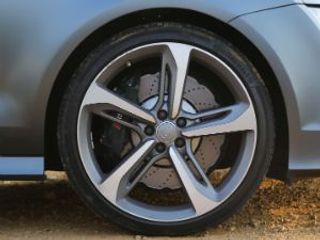 Car Care Guide: Brakes26 Jun, 2014 | By Team ZigWheels
Car Care Guide: Brakes26 Jun, 2014 | By Team ZigWheels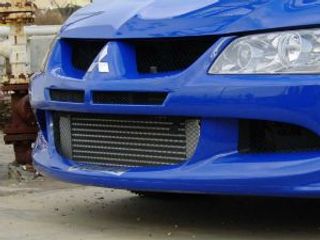 Tips and Tricks to Maintain Car Cooling Systems5 Sep, 2014 | By Team ZigWheels
Tips and Tricks to Maintain Car Cooling Systems5 Sep, 2014 | By Team ZigWheels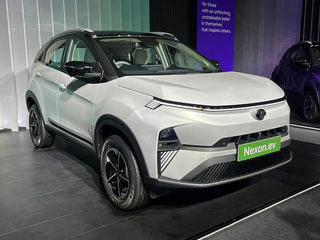 Reserve The 2023 Tata Nexon EV Facelift From Today!9 Sep, 2023 | By Team ZigWheels
Reserve The 2023 Tata Nexon EV Facelift From Today!9 Sep, 2023 | By Team ZigWheels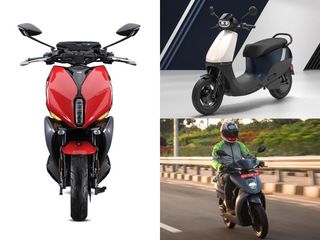 World EV Day 2023: All The Electric Two-wheeler Launching This Year Itself9 Sep, 2023 | By Team ZigWheels
World EV Day 2023: All The Electric Two-wheeler Launching This Year Itself9 Sep, 2023 | By Team ZigWheels These Are Top Automotive Headlines Of The Week9 Sep, 2023 | By Team ZigWheels
These Are Top Automotive Headlines Of The Week9 Sep, 2023 | By Team ZigWheels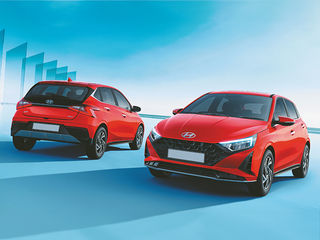 Here’s What The New Base Era Variant Of The 2023 Hyundai i20 Facelift Packs10 Sep, 2023 | By Team ZigWheels
Here’s What The New Base Era Variant Of The 2023 Hyundai i20 Facelift Packs10 Sep, 2023 | By Team ZigWheels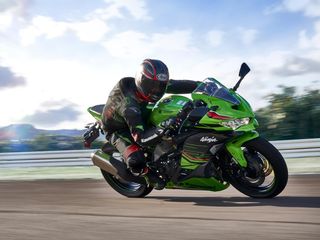 Get Ready For The Four-cylinder 400cc Screamer From Kawasaki10 Sep, 2023 | By Team ZigWheels
Get Ready For The Four-cylinder 400cc Screamer From Kawasaki10 Sep, 2023 | By Team ZigWheels


